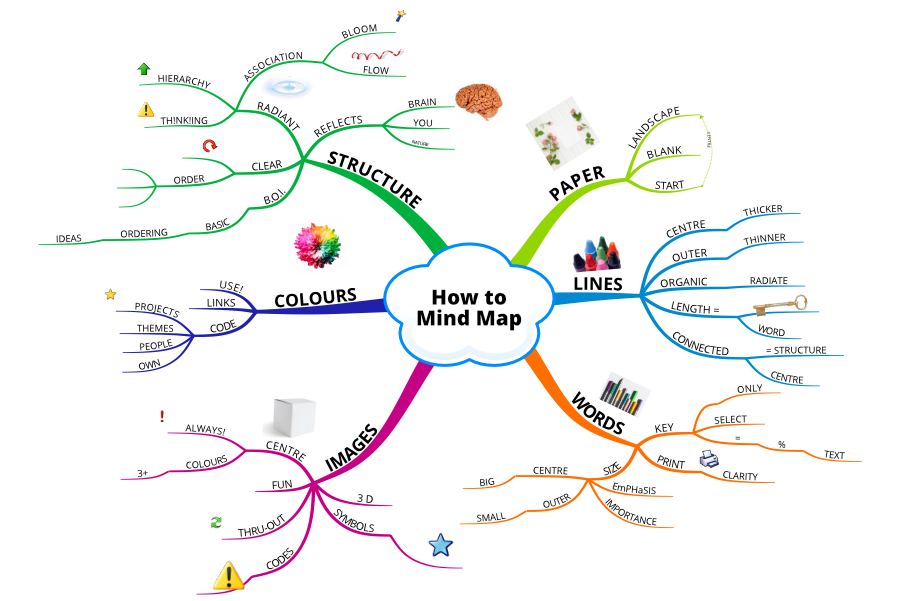A Step-by-Step Guide to Using Mind Maps for Studying
The key to academic success in a world teeming with information is learning smarter rather than harder. The mind map is one of the most powerful and underappreciated study aids. It is a visual approach to idea organization that aids students in comprehending, retaining, and relating concepts more effectively.
This manual will explain what mind mapping is, why it is effective, and how to create one for improved learning by following a step-by-step procedure.
What is a mind map?
A mind map is a visual tool for organizing information. Similar to how the brain instinctively organizes and connects information, it begins with a central concept and expands into associated subjects, subtopics, and specifics.
Mind maps transform dull notes into engaging visuals that enhance understanding and memory by using colors, keywords, symbols, and images.
What Are the Benefits of Mind Mapping for Studying?
Mind mapping is a great study aid for the following reasons:
Enhances memory by means of visual association
Explains complicated subjects by dividing them into smaller portions.
Promotes imaginative and more profound thought
Reduces review session time
In order to promote balanced learning, both brain hemispheres are engaged.
Creating a Mind Map for Studying: A Step-by-Step Guide
Step 1: Select Your Primary Subject
Begin with the topic or chapter you wish to learn about. Put the main point in the middle of the page. Make it stand out by using bright colors and perhaps a relevant image or emblem.
Example: Your main subject is the Human Nervous System.
Step 2: Establish Main Branches for Important Subtopics
For important subtopics, draw branches out from the center. Related to your main topic, these might comprise categories, processes, components, or definitions.
Sample Branches: Reflex Action, Neurons, Peripheral Nervous System, Central Nervous System
Step 3: Include Subbranches for Additional Information
Important facts, illustrations, or explanations can be found in smaller branches underneath each subtopic. Use just keywords; no lengthy phrases.
Tip: To improve memory via color association, use distinct hues for each main branch.
Step 4: Employ Images, Icons, and Symbols
A single image truly conveys a thousand words. Represent complicated concepts with tiny drawings or symbols. Visuals make the mind map more interesting and help activate memories.
For instance, a brain symbol for "CNS" or a lightning bolt for "electrical signals. "
Step 5: Maintain Organization and Adaptability
Mind maps don't need to be flawless. Feel free to be imaginative, but the layout should be readable and clear. Digital tools like: paper and whiteboards:
XMind
MindMeister
Coggle
Lucidchart
Realistic Example of Mind Mapping in Use
Suppose you are reading a chapter on photosynthesis.
Main Concept (Center): Photosynthesis
Main Topics: Importance, Chloroplast Structure, Light Reactions, Dark Reactions
Subbranches: ATP, NADPH, the Calvin Cycle, Stomata, Sunlight, and Glucose Formation
You may get a visual overview of an entire chapter that is simple to review and remember in minutes.
Ultimate Advice for Successful Mind Mapping
Check your mind map frequently. Memory is strengthened by repetition.
Mind maps may also be used for project planning or essay brainstorming.
Focus on creativity and clarity rather than perfection.
For even better results, combine active recall with mind mapping.
In conclusion
Mind mapping is a potent technique for maximizing your brain's capabilities, not simply a enjoyable drawing tool. This approach may change the way you study, regardless of whether you're getting ready for exams or attempting to understand difficult subjects.
Begin your mind mapping adventure today for quicker, more intelligent learning.
Visit www. smartstudys. com for more intelligent study methods and resources.


Post a Comment
0Comments